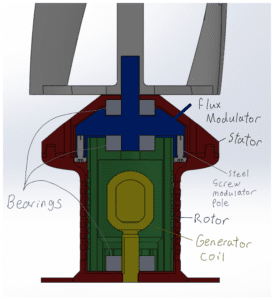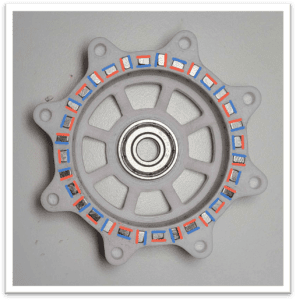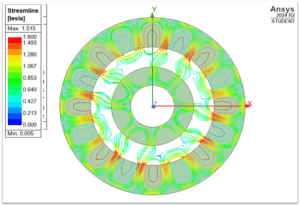
Kai Turner
Open for casual work or internships!
Aim
This was a small project that was aimed to help improve my skills in electrical simulations. Primarily I wanted to mess around with magnetic simulations and see how such simulations can be accomplished as I saw it being a useful skill for my future in developing robots, especially as I move more into the realm of custom motor design.
How it works
This gearbox creates a speed increase of 1:3 through the interactions of the magnetic fields of the stator and rotor, mediated by the flux modulator. No gears or mechanical contact at all are required to achieve this velocity ratio, purely the interaction of magnetic fields. This provides a number of benefits including, reduced friction and the ability to not break under impact loads as instead of force that normally might break a gear, it just skips one increment of rotation on the magnetic gearbox. The gearbox consists of three main stages: the rotor, the flux modulator and the stator which can be seen in the CAD cross section diagram below.

The stator magnets were arranged in a circular Halbach array (as seen below) to contain the magnetic field within the stator without the use of back-iron, further increasing the gearbox’s torque capacity while reducing cogging torque.


The interaction of the magnetic fields of the stator and the fields of the rotor mediated by the flux modulator was then simulated in Ansys Electrical Maxwell to measure its similarity to what I observed in real life with magnet paper.
